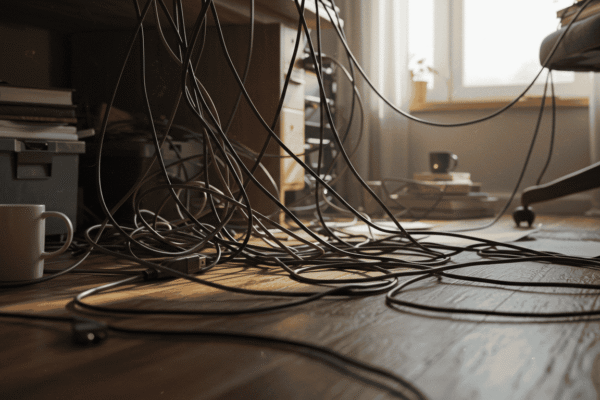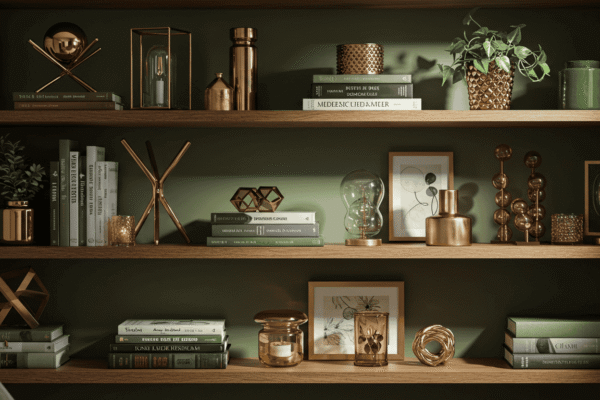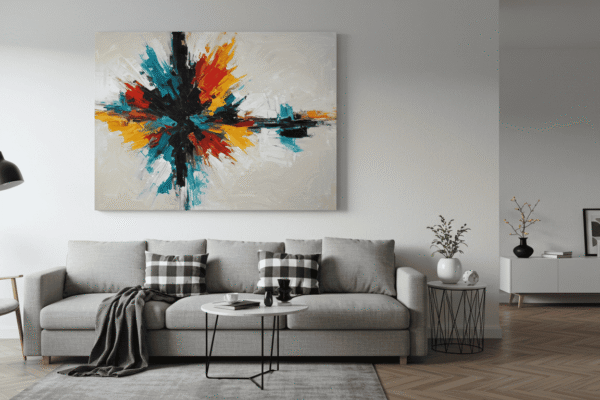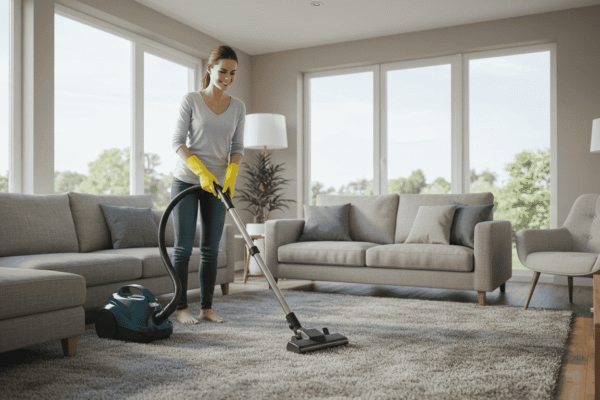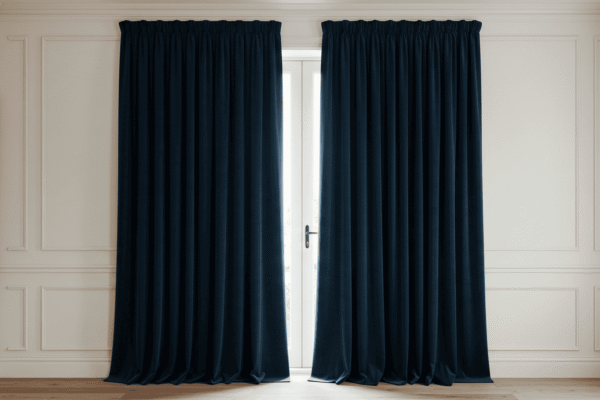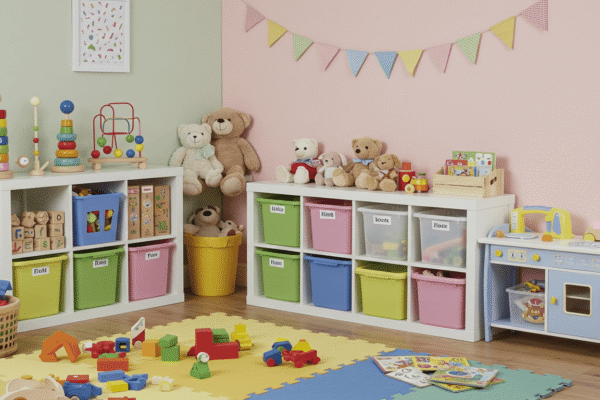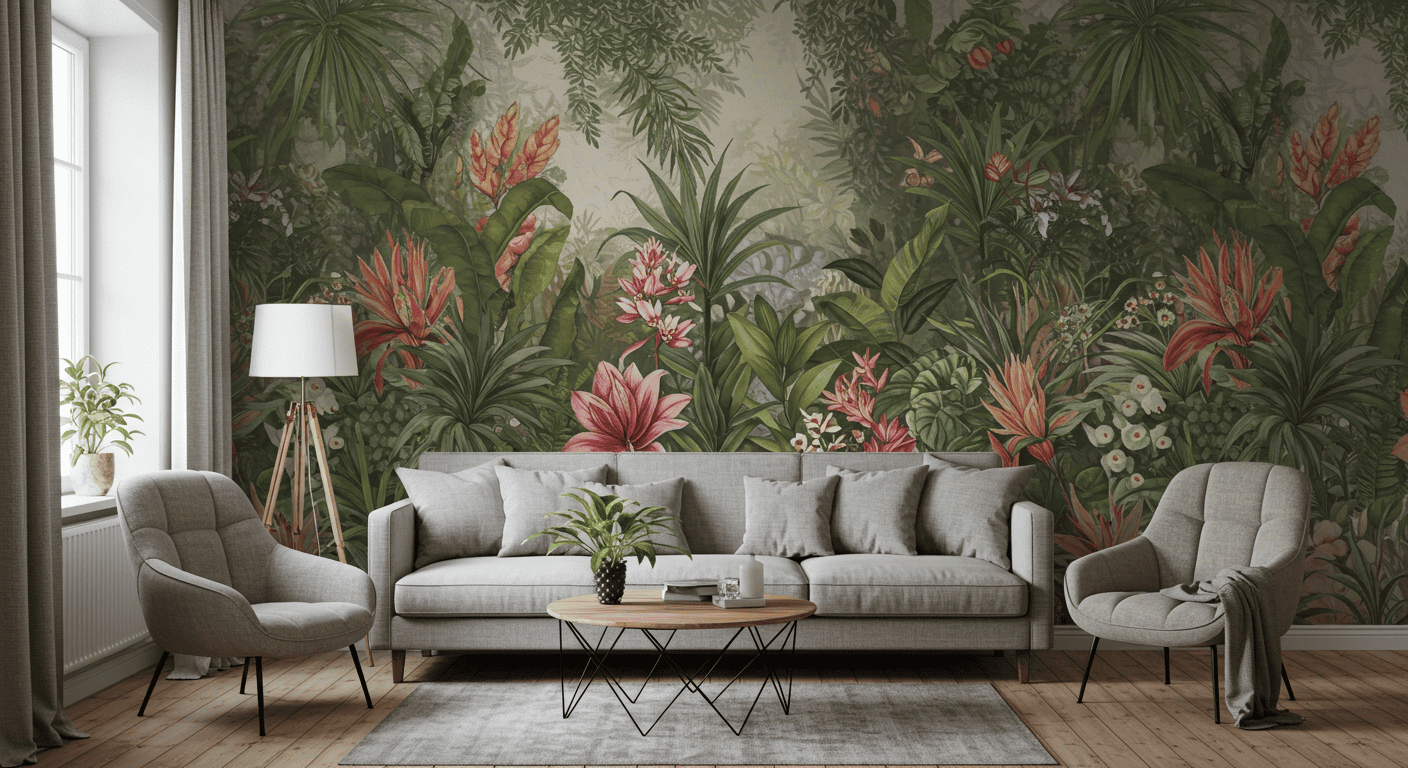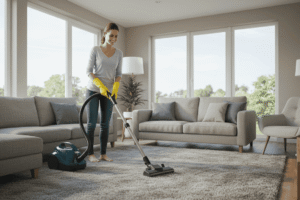Transforming a space with wallpaper is one of the easiest and most impactful ways to refresh your home’s look without a full renovation. Whether you’re aiming for a bold statement or a subtle texture, wallpaper design ideas offer endless possibilities to personalize every room. From DIY wallpaper installation tips to choosing the perfect pattern for your living room or bedroom, this guide will help you create stunning interior wall transformations that feel both stylish and inviting. Get ready to discover how a simple change can completely elevate your home décor!
Why Wallpaper Is Making a Stylish Comeback
Wallpaper has long been a popular choice for home décor, but recent years have seen it regain its status as a go-to solution for transforming a space with wallpaper. Unlike traditional paint, wallpaper offers unique textures, patterns, and visual depth that can instantly elevate the atmosphere of any room. Its ability to add personality and style without extensive renovations makes it an appealing option for homeowners looking for a quick yet impactful refresh.
In addition, advancements in wallpaper technology have made it more user-friendly and versatile than ever before. This revival is driven not only by design trends but also by practical innovations that address past challenges such as difficult installation and removal. Whether you want to create an accent wall or fully cover a room, wallpaper today combines aesthetic appeal with convenience, making it a favored choice for modern interiors.
Beyond Paint — The Visual Power of Wallpaper
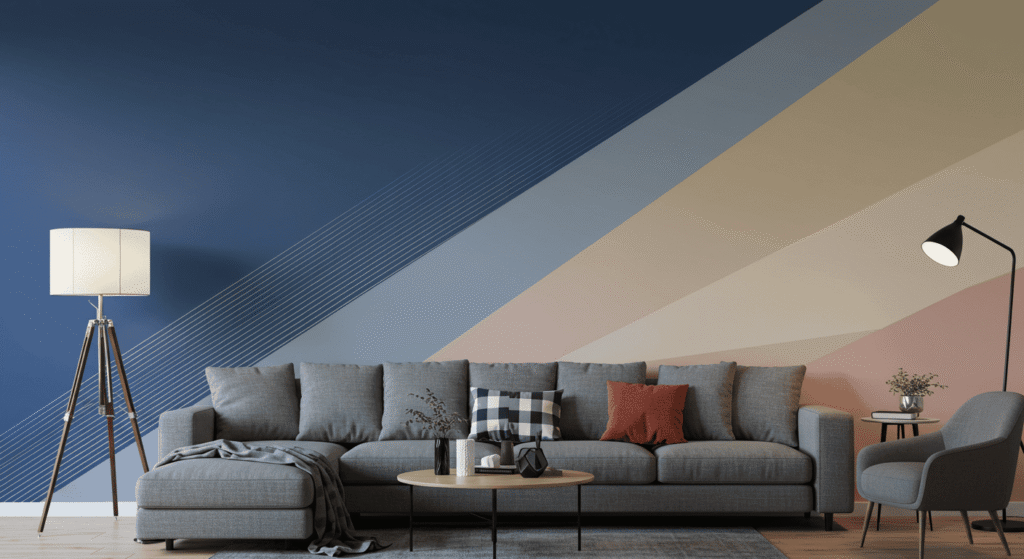
While paint offers simplicity, it often lacks the dynamic qualities that wallpaper brings to a space. Wallpaper design ideas allow for the incorporation of intricate patterns, textures, and even three-dimensional effects that paint simply cannot replicate. This adds layers of visual interest and can dramatically change the mood and perception of a room.
Wallpaper’s versatility means it can be tailored to suit any style—from bold, graphic prints that make a statement to subtle, textured finishes that add warmth and sophistication. The visual impact of wallpaper can transform plain walls into focal points, enhancing the overall design and creating a cohesive look throughout the home. By choosing the right wallpaper, you’re not just adding color; you’re creating an immersive experience that paint alone can’t achieve.
The New Generation of Wallpaper: Peel, Stick, and Impress
One of the biggest reasons wallpaper is making a comeback is the rise of peel and stick wallpaper options. These modern wallpapers are designed for easy application and removal, making them ideal for renters or anyone hesitant about committing to a permanent change. This innovation has opened the door to more creative and frequent home updates without the mess and expense of traditional wallpaper installations.
Peel and stick varieties come in a wide range of patterns and finishes, allowing homeowners to experiment with bold designs or subtle textures without professional help. Their repositionable nature reduces the stress of installation errors, and their removability means you can update your walls as often as you like to match changing trends or personal tastes. This new generation of wallpaper offers both convenience and style, proving that refreshing your home can be simple and impressive.
Choosing the Right Wallpaper for Your Space
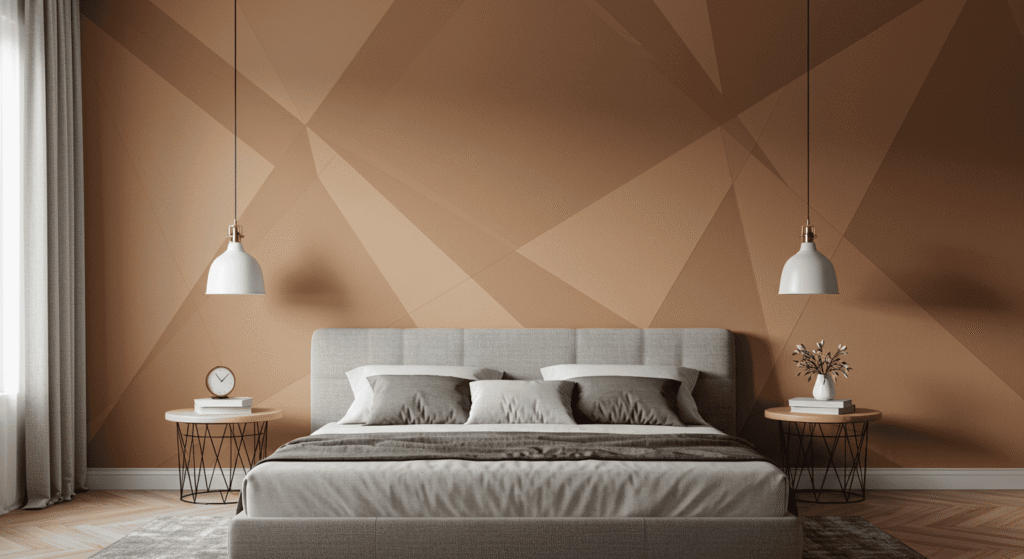
Selecting the perfect wallpaper is key to transforming a space with wallpaper in a way that feels intentional and harmonious. Different rooms have unique functions and atmospheres, so tailoring your wallpaper choices accordingly can make a big difference in both style and comfort. Understanding the purpose of each space helps guide decisions about patterns, colors, and textures that will enhance your home’s overall design.
Room-by-Room Wallpaper Guide
Each room in your home calls for a different approach when it comes to wallpaper. Here’s how to pick the best style for your specific needs:
Living Room: Bold Statements & Feature Walls
The living room is often the heart of the home and a perfect place to experiment with eye-catching wallpaper design ideas. Bold patterns, large-scale prints, or textured wallpapers can create a stunning feature wall that anchors the space. This approach adds personality and serves as a conversation starter, setting the tone for your entire décor. Consider using wallpaper on one wall to balance impact without overwhelming the room.
Bedroom: Calming Textures and Cozy Vibes
For bedrooms, the goal is to foster relaxation and comfort. Soft textures, muted patterns, and soothing colors work best to create a peaceful retreat. Wallpapers with gentle motifs or subtle textures add depth without distracting from the restful atmosphere. Choosing the right wallpaper here supports better sleep and makes your personal sanctuary feel warm and inviting.
Bathroom/Kitchen: Moisture-Friendly Options
Bathrooms and kitchens require wallpapers that can withstand humidity and occasional splashes. Opting for moisture-friendly or washable wallpaper ensures durability while maintaining style. These rooms are ideal for smaller patterned designs or textured finishes that add interest without becoming too busy. Proper wall preparation and choosing water-resistant wallpapers will keep your space looking fresh longer.
How to Use Color and Pattern Psychology
Colors and patterns have a powerful effect on our emotions and perceptions. Applying color and pattern psychology when selecting wallpaper can enhance the mood of each room. For example, cool blues and greens promote calmness and focus, making them ideal for bedrooms or workspaces. Warm tones like reds and oranges can energize social spaces like kitchens or living rooms.
Patterns also communicate different vibes — florals evoke softness and nostalgia, geometrics feel modern and structured, while abstract designs offer creativity and spontaneity. Understanding these subtle cues helps you choose wallpaper that not only looks good but also feels right.
Room + Mood Matching Chart
| Room | Recommended Colors | Pattern Styles | Mood Created |
|---|---|---|---|
| Living Room | Bold colors (navy, emerald) | Large-scale, geometric | Inviting, lively |
| Bedroom | Soft pastels (blue, lavender) | Subtle textures, florals | Calm, cozy |
| Bathroom | Light neutrals (white, beige) | Small patterns, washable | Clean, refreshing |
| Kitchen | Warm tones (yellow, terracotta) | Durable, simple patterns | Energetic, welcoming |
Prepping Your Walls Like a Pro
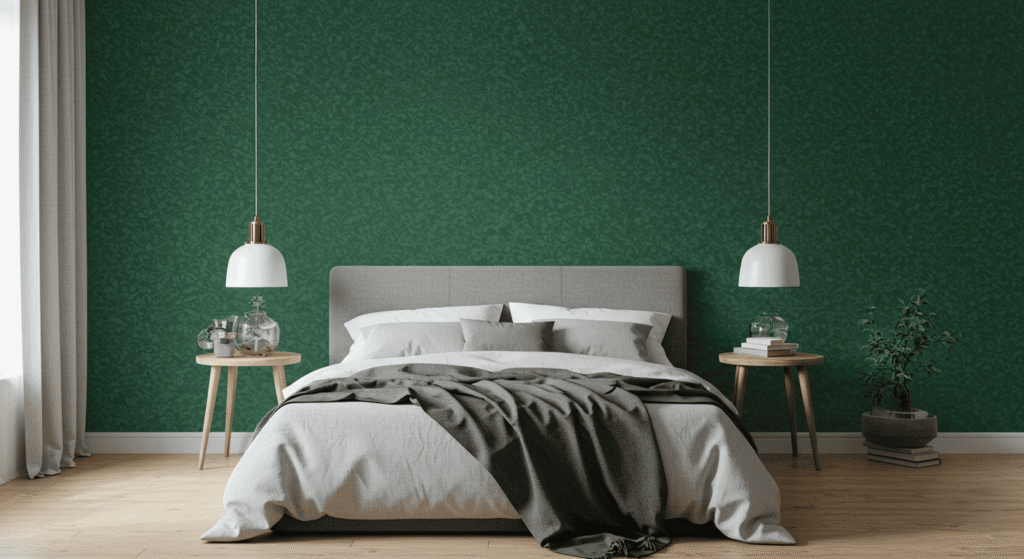
Proper wall preparation is essential when transforming a space with wallpaper to ensure a smooth, long-lasting finish. Skipping or rushing this step can lead to bubbles, peeling, or uneven surfaces that undermine your effort and investment. Taking the time to prepare your walls carefully will make installation easier and your results more professional.
Before you start applying wallpaper, you need to assess the condition of your walls and get them ready to receive the new covering.
The Must-Do Surface Check
Begin by inspecting the walls closely for any imperfections. Look for cracks, holes, peeling paint, or uneven patches that might interfere with adhesion. Walls should be clean, dry, and smooth before wallpapering.
- Remove any nails, screws, or hooks from the surface.
- Fill holes and cracks with spackle or filler, then sand smooth.
- If the wall has glossy paint, lightly sand it to create a better grip.
- Clean walls thoroughly to remove dust, grease, or residues—especially important in kitchens and bathrooms.
Addressing these issues upfront prevents future problems and ensures your wallpaper lays flat and sticks properly.
Tools and Techniques for a Flawless Base
Having the right tools at hand can simplify the preparation process and improve the final outcome. Here’s what you’ll need to prep your walls like a pro:
- Sandpaper or sanding block
- Spackle or wall filler
- Putty knife
- Cleaning sponge or cloth
- Primer or wallpaper sizing (if required)
- Level and measuring tape
For best results, apply a primer or wallpaper sizing solution to the walls. This seals porous surfaces and enhances the adhesive power of the wallpaper, reducing the risk of bubbles or peeling over time. Make sure to let everything dry completely before starting your wallpaper installation.
Pre-Wallpaper Prep Essentials
- Surface is clean, dry, and smooth
- Holes and cracks are filled and sanded
- Glossy paint is sanded lightly
- Walls are free from dust and grease
- Primer or sizing is applied and dried
- All tools are ready and on hand
DIY vs Professional Wallpaper Installation
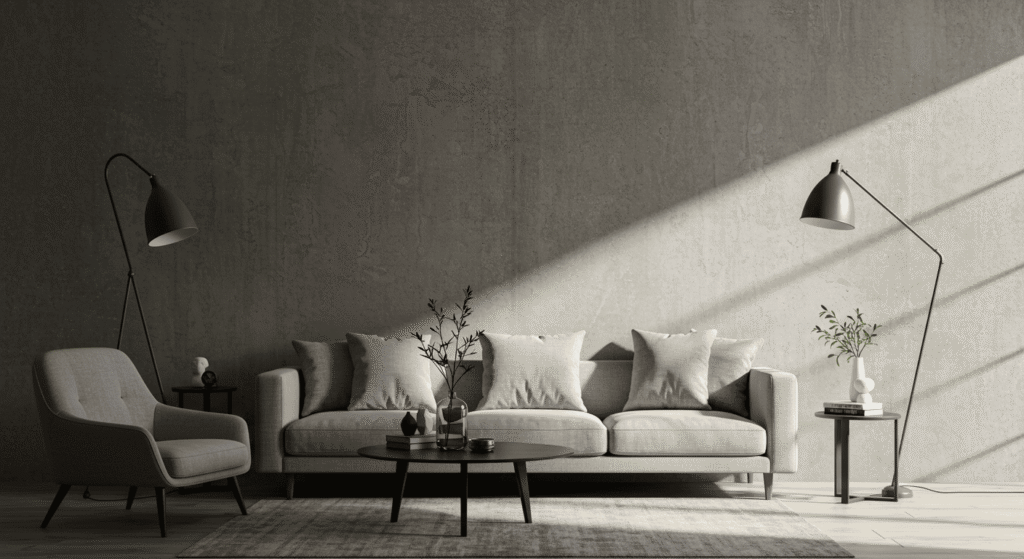
When transforming a space with wallpaper, one of the key decisions is whether to tackle the project yourself or hire a professional. Both options have their benefits, depending on your experience level, the complexity of the wallpaper, and how much time you’re willing to invest. Understanding when a DIY approach works and when professional help is advisable can save you frustration and ensure a beautiful finish.
Many homeowners feel empowered by the accessibility of DIY wallpaper installation techniques today, especially with the rise of peel and stick options. However, certain situations call for expert skills and tools to get the job done right.
When You Can Totally DIY It
DIY wallpapering is a great choice if you’re working with simpler projects and ready to invest some patience. Peel and stick wallpapers, small feature walls, or single-room makeovers with easy-to-handle patterns are perfect for beginners. If you enjoy hands-on projects, have basic tools, and are detail-oriented, installing wallpaper yourself can be a satisfying and budget-friendly option.
DIY is also ideal when you want full control over timing and design tweaks during installation. Plus, it allows you to learn valuable skills for future home improvements.
When to Consider Bringing in Help
There are times when hiring a professional wallpaper installer is the better route. Large rooms with complex patterns, textured or traditional wallpapers requiring paste application, and walls with imperfections demanding expert prep work are good reasons to seek help.
Professionals can ensure perfect alignment, minimize waste, and complete the job efficiently—saving you time and potential costly mistakes. If you’re short on time, unsure about wall condition, or want a flawless finish for a high-impact area, investing in expert installation will pay off in the long run.
Pros and Cons of DIY vs Hiring a Pro
| Aspect | DIY Installation | Professional Installation |
|---|---|---|
| Cost | Lower upfront cost | Higher upfront cost |
| Skill Required | Basic to moderate, depending on wallpaper type | High, with specialized tools and experience |
| Time Commitment | More time-intensive | Faster completion |
| Flexibility | Full control over timing and adjustments | Less flexible; scheduled appointment |
| Quality of Finish | Risk of mistakes like bubbles or misalignment | Generally flawless, even finish |
| Suitability | Best for peel and stick or small projects | Best for complex patterns and large areas |
Wallpaper Tricks to Make Small Spaces Look Bigger
When transforming a space with wallpaper, one challenge many homeowners face is how to maximize the feeling of space in smaller rooms. Fortunately, smart wallpaper choices can visually expand these areas, making them feel open, airy, and inviting. By understanding how light, patterns, and reflections work together, you can turn a cramped room into a stylish and spacious haven.
Light, Vertical, and Reflective Magic
Using light colors and wallpapers with vertical patterns helps create the illusion of height, making walls feel taller and ceilings higher. Soft neutrals, pale blues, or light grays reflect more light, brightening the room and reducing any sense of confinement. Wallpapers with subtle sheen or reflective finishes bounce natural and artificial light around the space, enhancing openness.
Vertical stripes or elongated patterns draw the eye upward, emphasizing height rather than width. This trick works well in narrow hallways, compact bedrooms, or small living rooms that need an instant lift.
Illusion Walls: Patterns That Stretch the Eye
Certain patterns can trick the eye into perceiving more space than there actually is. Horizontal stripes or wide-scale geometric patterns create a sense of width, ideal for rooms that feel too narrow. Meanwhile, large-scale florals or abstract designs with soft edges help blur boundaries, preventing the room from feeling boxed in.
Mirrored wallpaper effects or designs that mimic three-dimensional depth can add layers of visual interest while expanding the perceived size of the room. Combining these illusions with minimal, well-coordinated furnishings enhances the effect.
Quick Illusion Hacks Using Wallpaper
- Use light, cool colors to reflect light and brighten the space.
- Opt for vertical stripes or patterns to create height.
- Choose horizontal stripes for rooms that need more width.
- Incorporate wallpapers with subtle sheen or reflective surfaces.
- Select large-scale patterns with soft, flowing shapes to blur boundaries.
- Pair wallpaper illusions with minimal clutter and good lighting.
Accent Walls: The Art of the Statement
Creating an accent wall is one of the most effective ways to transform a space with wallpaper while adding personality and style. An accent wall draws attention, provides a focal point, and allows you to experiment with bold patterns or colors without overwhelming the entire room. The key is selecting the right wall and balancing the wallpaper’s impact with the rest of your décor.
How to Choose the Right Wall to Feature
Choosing the perfect wall for your wallpaper feature is crucial. Typically, the accent wall should be the first thing noticed when entering the room. Common choices include the wall behind a sofa in the living room, the headboard wall in the bedroom, or the wall with architectural elements like a fireplace or large windows.
Consider walls with minimal interruptions such as doors or windows to maximize the wallpaper’s visual impact. Also, think about the natural lighting in the room—well-lit walls will showcase colors and patterns beautifully, while darker walls may require lighter wallpaper choices to avoid making the room feel smaller.
Balancing Boldness with the Rest of Your Décor
Once you’ve selected your feature wall, the next step is harmonizing it with the surrounding space. If your wallpaper is bold and vibrant, keep the remaining walls and furnishings neutral or subtly textured to prevent visual clutter. This balance ensures your accent wall stands out as a statement piece without competing with other elements.
For rooms with already patterned or colorful furniture, choose wallpaper designs with complementary colors or simpler motifs to maintain cohesion. On the other hand, a neutral wallpaper accent wall can add texture and interest without overwhelming a room filled with vibrant décor.
Top 3 Feature Wall Layouts
Visual Idea: An image carousel or side-by-side comparison illustrating these popular feature wall layouts:
- Full Wall Coverage: The entire chosen wall is covered in wallpaper, creating a dramatic and immersive effect.
- Partial Wall Panels: Wallpaper is applied in framed sections or panels, adding dimension while breaking up the space.
- Half Wall or Wainscoting Style: Wallpaper covers the lower half of the wall, paired with paint or molding above, blending tradition with modern style.
Budgeting & Planning Your Wallpaper Project
One of the most important steps in transforming a space with wallpaper is careful budgeting and planning. Knowing exactly how much wallpaper you need and how to optimize costs can save you from last-minute expenses and wasted materials. Proper planning also helps ensure a smooth, stress-free installation.
How Much Wallpaper Do You Actually Need?
Calculating the right amount of wallpaper involves measuring your walls accurately and understanding how wallpaper rolls cover space. The basic formula to estimate wallpaper quantity is:
Total Wallpaper Needed (rolls) = Total Wall Area ÷ Coverage per Roll
Where:
- Total Wall Area = (Height of wall × Width of wall) × Number of walls to be covered
- Coverage per Roll is typically listed on the wallpaper packaging (usually around 50 square feet or 5 square meters per roll, but varies by product)
Example:
If your room has four walls each 8 feet high and 12 feet wide, your total wall area is:
8 ft × 12 ft × 4 walls = 384 sq ft
If one roll covers 50 sq ft, you will need:
384 ÷ 50 = 7.68 rolls → Round up to 8 rolls
Diagram suggestion: A simple visual showing a wall with height and width labeled, plus a roll of wallpaper with coverage area, illustrating the formula steps clearly.
Cost-Saving Tricks Without Compromising Style
Even with a fixed budget, you can still achieve a stunning wallpaper transformation by applying a few smart strategies:
- Focus on accent walls instead of wallpapering the entire room to reduce the amount needed.
- Choose peel and stick options that don’t require extra paste or professional installation costs.
- Use samples to test patterns and avoid costly mistakes.
- Buy wallpaper in bulk or during sales to lower the price per roll.
- Reuse leftover wallpaper creatively in smaller spaces like closets or shelves.
- Consider textured or patterned wallpapers that can hide minor wall imperfections, saving prep costs.
Wallpaper Coverage Estimator by Room Size
| Room Size (sq ft) | Approximate Rolls Needed* | Best Coverage Strategy |
|---|---|---|
| Up to 100 | 2–3 | Accent wall or small room |
| 100–200 | 4–5 | One or two feature walls |
| 200–300 | 6–7 | Full room coverage |
| 300+ | 8+ | Full room or multiple rooms |
*Roll coverage is assumed at approximately 50 sq ft per roll; always measure your space for accuracy.
Final Touches: Styling Your Transformed Space
Once you’ve successfully transformed a space with wallpaper, the finishing touches are what truly bring the room to life. Thoughtful styling and complementary décor not only enhance the wallpaper’s beauty but also create a cohesive and inviting environment. Paying attention to furniture choices and lighting can elevate your newly refreshed walls from good to stunning.
Complementary Decor & Furniture Tips
Choosing décor and furniture that harmonize with your wallpaper is essential to maintaining balance. If your wallpaper features bold patterns or vibrant colors, opt for simpler, neutral furniture to avoid visual clutter. Conversely, if your wallpaper is subtle or textured, you can introduce more colorful or patterned accents through cushions, rugs, and art pieces.
Textures in furniture—like soft fabrics, natural woods, or metal finishes—can complement wallpaper textures and add depth to the room. Consider the scale of furniture in relation to the wallpaper pattern; large patterns work well with minimalistic furniture, while small patterns pair nicely with more detailed furnishings.
Lighting Tricks to Highlight Wallpaper Textures
Lighting plays a key role in showcasing the unique qualities of your wallpaper. Layered lighting—combining ambient, task, and accent lighting—allows you to highlight textures and patterns throughout the day and night. Directional lighting, such as wall sconces or adjustable spotlights, can create shadows that enhance textured wallpaper surfaces.
Natural light is your best friend; position furniture and mirrors to reflect daylight and make the wallpaper’s colors and textures pop. For rooms with less natural light, consider warm LED bulbs that mimic sunlight and bring out the wallpaper’s true tones.
Before and After Inspiration Ideas
Before: Plain painted walls with minimal décor — After: Feature wall with bold patterned wallpaper, paired with a neutral sofa and metallic accents for a modern touch.
Before: Small, cramped bedroom with flat walls — After: Vertical striped wallpaper, light-colored linens, and sleek lighting fixtures to create height and openness.
Before: Dull kitchen walls — After: Moisture-resistant wallpaper behind open shelves and under cabinets combined with bright task lighting for a fresh, vibrant look.
Transforming a Space with Wallpaper: Final Thoughts
Transforming a space with wallpaper is one of the most impactful and creative ways to refresh your home’s style. Whether you choose bold patterns, subtle textures, or innovative peel-and-stick options, wallpaper offers endless possibilities to express your personality and elevate your interiors. By carefully selecting the right wallpaper, prepping your walls properly, and adding thoughtful finishing touches, you can achieve a stunning transformation that lasts.
Remember, the key to success lies in planning, patience, and embracing your unique style. Ready to turn your walls into works of art? Now’s the perfect time to start your wallpaper journey!

